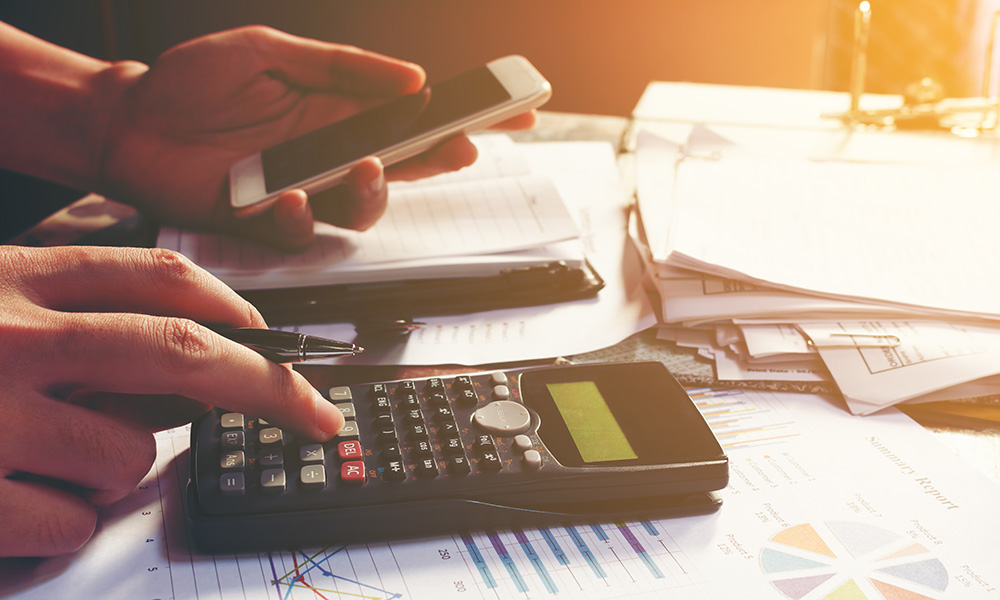Guide to VAT Accounting Schemes
Back to all Tax and VAT guides

VAT can be confusing and time-consuming for small businesses, but VAT accounting schemes can make life easier and improve your cash flow. But what’s available, and how can you be sure you’re using the right scheme for you?
When should you register for VAT?
Any company or sole trader can choose to register for VAT; however, if your total VAT taxable turnover for the last 12 months was over the VAT threshold of £85,000 or you expect your turnover to go over that amount in the next 30 days, registration is compulsory. Once you pass the threshold, you have 30 days to register. If you’re late doing this, you will have to pay VAT on any sales you’ve made since the date you should have registered, and you may also have to pay a penalty, depending on how much you owe and how late your registration is. You can register for VAT online. As part of this process, you’ll also be able to register for any VAT accounting schemes you may be eligible for.
Making Tax Digital
If you register for standard VAT, what will be expected of you? As of April 2022, businesses registered for VAT must keep digital records and submit their VAT returns using compliant Making Tax Digital (MTD) software, such as AccountsPortal, or a bridging tool if a spreadsheet is used to record VAT purchases and sales. The information recorded is then used to complete a VAT return.
Standard rate VAT
If you simply opt for the standard rate of VAT, most goods and services will be charged at 20%. As a VAT-registered company you will need to report the amount of VAT you charged your customers and the amount of VAT you paid to other businesses by submitting a VAT return to HMRC – usually every three months. You must then either pay any VAT that’s due or claim a refund if you have paid more VAT than you have charged.
VAT accounting schemes
VAT accounting schemes are designed to simplify your VAT accounting and could save you money while making it easier to plan for VAT payments. There are several possible schemes, with varying qualifying criteria and differing VAT rates. These include:
VAT flat rate scheme
With this scheme, you calculate the VAT due to HMRC as a percentage of your turnover. This is instead of paying the difference between the actual VAT you have charged on sales and the VAT you’ve paid out on purchases.
The flat rate you’ll pay depends on the industry you’re working in. Levels have been set so that you’ll probably pay around the same amount of VAT as if you’d carried out the total calculation, but this is a much simpler way of doing so. If, however, your purchases are significantly higher than expected for your sector, it may not be worth it. You get a 1% discount during your first year of registration.
It’s also worth noting that with this scheme, you cannot reclaim the VAT on your purchases except for certain capital assets over £2,000. You’re only eligible if you expect your VAT-taxable turnover to be £150,000 or less (excluding VAT) in the next 12 months. Once you’re using the scheme, you can continue until your total business income exceeds £230,000. You must leave the scheme if you become ineligible.
Limited cost trader
If you’re a limited-cost trader using the flat rate scheme, you’ll have to pay VAT at 16.5%. A limited-cost trader spends less than 2% of the value of its sales on goods – not services – over the accounting period, usually a quarter. Some goods cannot be included in this calculation, including capital goods such as new equipment, food and drink, and vehicles or parts for vehicles. Any business on the flat rate scheme must check they’re not a limited cost trader each VAT accounting period. Limited-cost traders do still get the first-year discount, however.
VAT cash accounting scheme
With the Standard accounting method you account for VAT on your sales when you issue a VAT invoice. However, the cash accounting scheme allows you to account for VAT on your sales based on payments you receive rather than on tax invoices you issue. This means you won’t have to pay HMRC the VAT due on sales your customers have not yet paid for, which could benefit your cash flow. It may be of limited benefit if you are usually paid as soon as you make a sale, regularly reclaim more VAT than you pay and/or make continuous supplies of services. If you register for the scheme and find it is of no benefit, you can stop using it at the end of any VAT accounting period and return to the normal method of accounting for VAT. To be eligible for the scheme, you estimated taxable turnover must be no more than £1.35 million; you can then stay in the scheme for as long as it remains below £1.6 million.
Annual Accounting Scheme
Most VAT-registered businesses submit their VAT returns and payments to HMRC four times a year, but with the Annual Accounting Scheme, you can make advance VAT payments towards your bill based on your last return – or estimated if you’re new to VAT – and submit just one VAT return each year. When you submit your return, you can pay any difference or apply for a refund if you’ve overpaid.
If your estimated VAT taxable turnover is £1.35 million or less, you can join the scheme. And, while it will simplify your admin, it may not be suitable if you regularly reclaim VAT, as you’ll only be able to get one refund a year.
If eligible, you may also be able to combine the annual accounting scheme with the VAT flat rate and VAT cash accounting schemes.